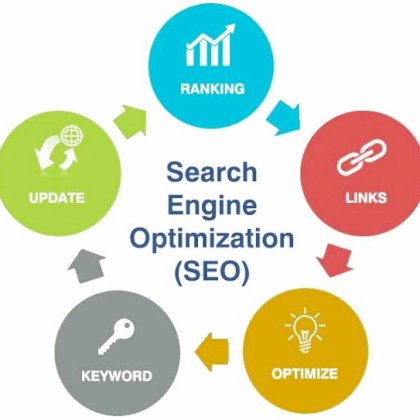What is Brand Advertising and Why is it Important?How to Create a Successful Brand Advertising Strategy

brand advertising Coursera is a leading online platform offering a diverse range of courses, including digital marketing. With the rapid growth of the digital industry, businesses are increasingly focusing on utilizing effective digital marketing strategies to reach their target audience and achieve their marketing goals. Coursera's digital marketing courses provide learners with comprehensive knowledge and practical skills to navigate through the complex world of online marketing. From understanding consumer behavior to implementing search engine optimization and social media marketing techniques, Coursera equips students with the tools necessary to succeed in this ever-evolving field. Whether you are a beginner looking to build a strong foundation or an experienced professional aiming to stay up-to-date with the latest industry trends, Coursera's digital marketing courses offer a valuable learning experience for all.
Brand advertising is a strategic marketing approach that focuses on promoting a company's brand, rather than specific products or services. It involves creating a positive perception and recognition of the brand in the minds of consumers. In today's competitive business landscape, brand advertising plays a crucial role in establishing a strong brand identity and fostering customer loyalty.
One of the key reasons why brand advertising is important is that it helps to differentiate a company from its competitors. In a crowded marketplace, where consumers are bombarded with countless options, having a unique and recognizable brand is essential. A strong brand can effectively communicate the company's values, personality, and promise to customers, helping to build trust and credibility.
Another important aspect of brand advertising is its ability to create emotional connections with customers. By telling authentic and compelling stories, brand advertising can evoke emotions and create memorable experiences. This emotional connection not only helps to drive customer loyalty but also increases the likelihood of word-of-mouth referrals and positive brand advocacy.
Furthermore, brand advertising plays a significant role in building brand equity. Brand equity refers to the value and strength of a brand in the market. A well-established and reputable brand can command higher prices, attract top talent, and enjoy a competitive edge. By consistently investing in brand advertising, companies can enhance their brand equity and position themselves as industry leaders.
It is important to note that brand advertising should align with the company's overall marketing and business strategies. The key messages, tone, and visual elements used in brand advertising should be consistent with the brand's identity and values. This consistency helps to reinforce the brand image and make it more memorable and recognizable to consumers.
In conclusion, brand advertising is a critical component of a company's marketing strategy. It helps to differentiate the brand, create emotional connections with customers, and build brand equity. By investing in brand advertising, companies can establish a strong brand identity, foster customer loyalty, and ultimately drive business growth.
Creating a successful brand advertising strategy is crucial for businesses looking to establish a strong online presence and attract their target audience. In this article, we will discuss the key steps to take in order to develop an effective brand advertising strategy that generates results.
- Identify your target audience: Before diving into any form of advertising, it is important to define who your target audience is. Conduct market research and analyze demographics, interests, and buying behaviors to gain a deep understanding of your potential customers.
- Set clear objectives: Determine the goals you want to achieve with your brand advertising strategy. Whether it is increasing brand awareness, driving website traffic, or boosting sales, setting clear objectives will help you measure the success of your campaigns.
- Choose the right advertising channels: There are various advertising channels available today, such as social media, search engines, display ads, and influencer marketing. Select the channels that align with your target audience and objectives. Each channel may require a different approach and budget, so choose wisely.
- Create compelling and relevant content: Content is king in the digital world. Develop high-quality content that resonates with your target audience. Incorporate relevant keywords naturally into your content to improve SEO and increase visibility in search engine results.
- Optimize your website: A well-optimized website is essential for a successful brand advertising strategy. Ensure your website is user-friendly, fast-loading, and mobile-responsive. Optimize meta tags, headings, and URL structures with relevant keywords to improve search engine rankings.
- Monitor and measure performance: Regularly track and analyze the performance of your advertising campaigns. Use analytics tools to monitor metrics like click-through rates, conversion rates, and return on investment. This data will help you identify areas of improvement and make data-driven decisions for future campaigns.
- Stay up to date with industry trends: The digital landscape is constantly evolving. Stay informed about the latest trends and changes in the advertising industry. Continuously adapt your brand advertising strategy to stay ahead of the competition and reach your target audience effectively.
By following these steps and implementing a well-thought-out brand advertising strategy, you can create a strong online presence, connect with your target audience, and drive business growth. Remember, success in brand advertising requires patience, continuous testing, and a willingness to adapt to changing consumer behaviors.
Key Elements of Effective Brand Advertising Campaigns
In today's competitive business landscape, creating an effective brand advertising campaign is essential for companies looking to stand out from the crowd and establish a strong presence in the market. A well-executed campaign can not only increase brand awareness but also drive customer engagement and ultimately lead to higher sales. In this article, we will explore the key elements that make up a successful brand advertising campaign.
1. Clear and Compelling Messaging: An effective brand advertising campaign starts with a clear and compelling message that resonates with the target audience. Whether it's a slogan, tagline, or a captivating headline, the messaging should communicate the brand's unique value proposition and differentiate it from competitors.
2. Consistent Brand Identity: A strong brand identity is crucial for a successful advertising campaign. This includes a well-designed logo, a consistent color palette, and a distinct brand voice. Consistency in branding across all channels helps to build trust and familiarity with the audience.
3. Targeted Audience Segmentation: To maximize the effectiveness of an advertising campaign, it's important to identify and target specific audience segments. By understanding their demographics, interests, and behaviors, brands can tailor their messages to resonate with each segment, increasing the chances of engagement and conversion.
| Key Elements | Description |
|---|---|
| 4. Compelling Visuals: | The use of visually appealing graphics, images, and videos can capture attention and convey the brand's message effectively. High-quality visuals not only make the campaign more engaging but also leave a lasting impression on the audience. |
| 5. Omni-channel Presence: | An effective brand advertising campaign should have a presence across multiple channels, such as television, radio, print, digital, and social media. This ensures that the brand reaches a wide audience and maximizes its exposure. |
| 6. Emotional Appeal: | Creating an emotional connection with the audience is a powerful tool in brand advertising. By appealing to their emotions, brands can create a lasting impact and forge a deeper relationship with consumers. |
| 7. Measurable Goals: | Setting measurable goals is crucial for evaluating the success of an advertising campaign. Whether it's increasing website traffic, generating leads, or driving sales, having clear and quantifiable objectives helps to track progress and make necessary adjustments. |
By incorporating these key elements into their brand advertising campaigns, companies can create a compelling and impactful campaign that not only captures the attention of the target audience but also drives brand loyalty and business growth. Remember, effective advertising is not only about showcasing products or services but also about building a strong and memorable brand that resonates with consumers.
The Impact of Brand Advertising on Consumer Behavior
Brand advertising plays a crucial role in shaping and influencing consumer behavior. In today's competitive market, where multiple brands are vying for consumer attention, effective advertising strategies can make all the difference. This article explores the profound impact that brand advertising has on consumer behavior and highlights the importance of incorporating SEO principles and utilizing relevant keywords in order to maximize its effectiveness.
One of the key ways in which brand advertising influences consumer behavior is by creating brand awareness. Through strategic and targeted advertising campaigns, brands can increase their visibility and ensure that their products or services are at the forefront of consumers' minds. This increased awareness can ultimately lead to brand recognition and a higher likelihood of consumers choosing that brand over competitors.
Brand advertising also has the power to shape consumers' perceptions and attitudes towards a brand. By effectively communicating the unique value proposition and positioning of a brand, advertising can influence how consumers perceive its quality, reliability, and overall appeal. Strong brand messaging and consistent advertising efforts can build trust and credibility, which are important factors in consumer decision-making processes.
Additionally, brand advertising plays a significant role in creating emotional connections with consumers. Through memorable and impactful campaigns, brands can evoke emotions and forge an emotional bond with their target audience. This emotional connection goes beyond rational decision-making and can greatly influence consumer behavior, leading to increased brand loyalty and advocacy.
It is important to note that in order for brand advertising to have a lasting impact on consumer behavior, it must be authentic and resonate with the target audience. Forced or irrelevant advertising can have the opposite effect and lead to a negative perception of the brand. Therefore, it is crucial for brands to understand their target market and tailor their advertising messages accordingly.
- Target Market Analysis: Conduct thorough research to identify the target market's demographics, interests, and preferences. This will allow for more effective targeting and messaging in brand advertising campaigns.
- Keyword Research: Utilize SEO principles to identify relevant keywords that resonate with the target audience. Incorporate these keywords naturally throughout the advertising content to enhance visibility and search engine rankings.
- Consistency and Frequency: Establish a consistent and frequent advertising presence to maintain brand visibility and reinforce brand messaging in consumers' minds. This can be achieved through various channels, including digital advertising, television, print, and social media.
- Tracking and Analytics: Regularly monitor and analyze the effectiveness of brand advertising campaigns. Utilize tracking tools and data analysis to measure key performance indicators such as brand awareness, engagement, and conversion rates.
In conclusion, brand advertising has a significant impact on consumer behavior. By effectively utilizing SEO principles, incorporating relevant keywords, and providing valuable information to the audience, brands can maximize the effectiveness of their advertising efforts. However, it is important to ensure that the advertising content remains authentic, resonates with the target audience, and evokes emotions to create a lasting impression. By adopting a resolute and consistent approach, brands can harness the power of advertising to shape consumer behavior and drive positive business outcomes.
Measuring the Success of Your Brand Advertising Efforts
Brand advertising is an essential aspect of a successful marketing strategy. It is what helps you differentiate your business from competitors and create a strong, recognizable identity for your brand. But how can you determine if your brand advertising efforts are effective? In this article, we will explore various metrics and methods to measure the success of your brand advertising. One of the key metrics to consider when measuring brand advertising success is brand awareness. This refers to the extent to which consumers are familiar with and recognize your brand. To measure brand awareness, you can track metrics such as website traffic, social media followers, and search engine rankings. A higher level of brand awareness indicates that your advertising efforts are reaching and resonating with your target audience. Another important metric is brand recall. This measures how well consumers remember your brand when prompted with a specific product or service category. You can measure brand recall through surveys or by tracking the number of mentions or references to your brand in online conversations. A higher brand recall indicates that your advertising is making a lasting impression on consumers. Brand perception is another crucial aspect to measure. It refers to how consumers perceive and think of your brand. You can measure brand perception through surveys that ask consumers to rate your brand on attributes such as quality, trustworthiness, and relevance. A positive brand perception indicates that your advertising efforts are effectively communicating the desired message about your brand. Engagement metrics are also significant in measuring brand advertising success. This includes metrics such as likes, shares, comments, and click-through rates. These metrics indicate how much your audience is actively engaging with your brand and its advertising content. A higher level of engagement implies that your advertising efforts are capturing and holding the attention of your audience. Lastly, sales and revenue are ultimate indicators of brand advertising success. While it may not directly measure the success of individual advertising efforts, an increase in sales and revenue can be attributed to the cumulative effects of your brand advertising strategies. Tracking sales and revenue can be done through various analytics tools and platforms. In conclusion, measuring the success of your brand advertising efforts is crucial in determining the effectiveness of your marketing strategy. By tracking metrics such as brand awareness, recall, perception, engagement, and sales, you can gain valuable insights into the impact of your advertising. Keep in mind that these metrics should be analyzed together to get a comprehensive understanding of your brand advertising performance.
How to Target Your Brand Advertising to Reach the Right Audience
When it comes to brand advertising, one of the most important factors to consider is targeting the right audience. By doing so, you can ensure that your marketing efforts are reaching the people who are most likely to be interested in your brand and products.
So, how can you effectively target your brand advertising to reach the right audience? Here are some key strategies to consider:
- Define your audience: Before you can target your advertising, you need to have a clear understanding of who your ideal audience is. Start by developing buyer personas and conducting market research to identify demographics, interests, and purchasing behaviors that align with your brand.
- Utilize data and analytics: Use data and analytics tools to gain insights into audience behavior and preferences. This will help you tailor your advertising campaigns to resonate with your target audience's motivations and needs.
- Segment your audience: Rather than targeting your entire audience with a single campaign, consider segmenting them into smaller groups based on characteristics or behaviors. This will allow you to create more personalized and relevant ads that speak directly to their specific needs and interests.
- Leverage social media advertising: Social media platforms provide powerful targeting options that can help you reach your ideal audience. Take advantage of features such as custom audiences, lookalike audiences, and interest targeting to ensure your ads are shown to the right people.
- Use search engine optimization: Incorporate SEO techniques into your content and website to improve visibility in search engine results. This will help attract organic traffic from people who are actively searching for products or services related to your brand.
- Collaborate with influencers: Partnering with influencers who have a strong following within your target audience can significantly boost the reach and impact of your brand advertising. Identify influencers who align with your brand values and have an engaged audience that matches your target demographic.
- Monitor and analyze results: Continuously monitor the performance of your advertising campaigns and analyze the results. This will allow you to identify what's working and make necessary adjustments to optimize your targeting and messaging.
By implementing these strategies, you can maximize the effectiveness of your brand advertising and ensure that you're reaching the right audience. Remember, targeting is key when it comes to driving engagement, conversions, and long-term brand loyalty.
Examples of Successful Brand Advertising Campaigns
In today's competitive marketplace, a well-executed brand advertising campaign can make all the difference. Companies across industries are constantly striving to create memorable and impactful campaigns that resonate with their target audience. In this article, we will explore some of the most successful brand advertising campaigns to date, showcasing their brilliance and effectiveness. 1. Nike's "Just Do It" Campaign: One of the most iconic and successful brand advertising campaigns of all time is Nike's "Just Do It" campaign. Launched in 1988, this campaign aimed to inspire athletes and individuals from all walks of life to push their boundaries, overcome challenges, and achieve greatness. With its simple yet powerful messaging, Nike successfully positioned itself as a brand that stands for determination, ambition, and success. The "Just Do It" tagline has become synonymous with Nike and has contributed significantly to the company's success. 2. Coca-Cola's "Share a Coke" Campaign: In 2011, Coca-Cola launched its "Share a Coke" campaign, which quickly became a global phenomenon. The campaign involved replacing the Coca-Cola logo on bottles with popular names, encouraging people to share a Coke with their loved ones. This personalized approach resonated with consumers and sparked a wave of social media engagement. The campaign not only increased Coca-Cola's sales but also strengthened the emotional connection between the brand and its customers. 3. Apple's "Get a Mac" Campaign: Apple's "Get a Mac" campaign, which ran from 2006 to 2009, brilliantly showcased the brand's superiority over its competitors. The campaign featured a series of humorous commercials where two characters, a young and cool "Mac" and a nerdy and outdated "PC," portrayed the benefits of owning a Mac computer. This campaign not only highlighted Apple's innovative products but also helped redefine the brand's image and position it as a leader in the technology industry. 4. Old Spice's "The Man Your Man Could Smell Like" Campaign: In 2010, Old Spice launched a viral advertising campaign featuring the character "The Man Your Man Could Smell Like." This humorous and over-the-top campaign aimed to reposition the brand as relevant and appealing to a younger audience. With its catchy jingle, memorable phrases, and hilarious commercials, Old Spice successfully revitalized its brand and saw a significant increase in sales as a result. These are just a few examples of successful brand advertising campaigns that have left a lasting impact on consumers. Each of these campaigns demonstrates the importance of understanding your target audience, crafting a compelling message, and delivering it through creative and engaging content. By studying these successful campaigns, marketers can gain valuable insights and inspiration for their own brand advertising strategies. Remember, the key to a successful campaign lies in creating a memorable and impactful experience for your audience.
Frequently Asked Questions
Brand advertising is a marketing strategy that aims to promote a specific brand or company rather than focusing on specific products or services. It is designed to create brand awareness, shape brand perception, and build brand loyalty.
Brand advertising plays a crucial role in developing a long-term relationship with consumers. It helps create a strong brand identity, differentiate from competitors, and establish an emotional connection with the target audience. Additionally, it increases brand recognition and recall, leading to higher customer trust and loyalty.
Some of the key benefits of brand advertising include increased brand awareness, enhanced brand reputation, improved customer trust and loyalty, higher customer retention, competitive advantage, and potential for higher sales and revenue.
Some common types of brand advertising include print advertising, television and radio commercials, outdoor billboards, social media ads, influencer partnerships, content marketing, event sponsorships, and public relations activities.
To create an effective brand advertising campaign, it is important to define your target audience, identify your brand's unique value proposition, create compelling and consistent brand messaging, choose appropriate channels, track and analyze campaign performance, and continuously optimize your strategy based on insights and feedback.
Brand advertising can positively impact business growth by increasing brand visibility, attracting new customers, building customer loyalty, improving customer perception and trust, and ultimately driving sales and revenue growth.
Storytelling is an important element in brand advertising as it helps create a deeper emotional connection with the audience. Through storytelling, brands can effectively communicate their values, brand purpose, and brand story, making it easier for consumers to relate and engage with the brand.
Brand advertising can be measured through various metrics such as brand awareness surveys, brand recall and recognition studies, social media engagement rates, website traffic and conversions, customer feedback and satisfaction scores, and sales data analysis.
No, brand advertising is not limited to big companies. Businesses of all sizes can benefit from brand advertising to build their brand identity, differentiate from competitors, and connect with their target audience. The key is to tailor the advertising strategy and budget to fit the specific goals and resources of the business.
The cost of brand advertising can vary depending on various factors such as the chosen advertising channels, campaign duration, target audience size, and creative production costs. It is important to define a budget based on your advertising goals and allocate resources accordingly.
 English
English
 Turkish
Turkish 























